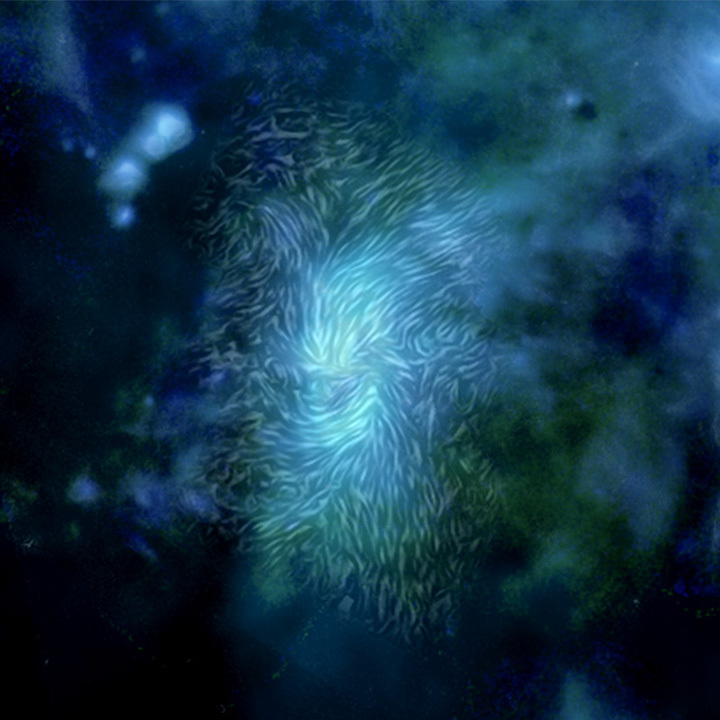6.06.2020
Turns out magnetic fields — not gravity — govern the center of the Milky Way.

What governs the dynamics of gas close to the center of our Milky Way galaxy? Gravity is the standard answer. After all, there’s a 4 million-solar-mass black hole hiding there.
But new data from NASA’s Stratospheric Observatory for Infrared Astronomy (SOFIA) reveal that strong magnetic fields may actually dominate, just like they do in the Sun’s corona. The new result may shed light on two outstanding questions about the galactic center.
INTO THE GALACTIC CENTER
SOFIA is a Boeing 747SP turned high-flying observatory. Its HAWC+ instrument, a far-infrared imaging polarimeter, studied the galactic center during flights in May 2017 and July 2018. Measurements of the far-infrared light’s polarization revealed the orientation of dust particles, which rotate to align perpendicular to magnetic field lines.
Charles Dowell (NASA / JPL) led a team in studying the central 15 light-years of the galactic center, deducing an average magnetic field strength of 0.005 gauss. That’s about 100 times weaker than the average magnetic field strength on Earth’s surface. But since the density in the galactic center is so low, only some 10,000 atoms per cubic centimeter, the gas’s magnetic pressure is much higher than its thermal pressure.
As a result, gravity may not be the dominant force that determines the motions of the gas. Instead, “the magnetic field may govern the kinematics and channel the plasma, just like magnetic fields dominate the physics of the solar corona,” says team member Joan Schmelz (Universities Space Research Association), who presented the preliminary results Tuesday at the virtual meeting of the American Astronomical Society.
“The data provide the most detailed look yet at the magnetic fields surrounding our galaxy’s central black hole,” says team member David Chuss (Villanova University).
EXPLAINING STRANGE BLACK HOLE BEHAVIOR
Andrew Fox (Space Telescope Science Institute), who was not involved in the study, says the results are not really surprising. “The galactic center is a very energetic region full of highly ionized plasmas,” he says, “so it makes sense that magnetic fields would dominate other sources of pressure.”
But according to Schmelz, astrophysicists generally tend to avoid including the effects of magnetic fields because they complicate the picture. “We’re now confronted with data that are so compelling that we just can’t ignore magnetic fields anymore,” she says.
If magnetic fields govern gas motions rather than just gravity, this may explain two surprising facts about the core of our Milky Way galaxy: the low birth rate of new stars (despite the presence of huge amounts of gas) and the weak activity of the galaxy’s central black hole. Strong magnetic fields could both suppress star formation and prevent matter from falling into the black hole.
Meanwhile, Schmelz cautions that calculating magnetic field strength from polarization data is not straightforward. “Our next step is to check if our standard techniques do apply in this turbulent environment,” she says. “So far, the observation of Zeeman effects in the Milky Way center [the splitting of spectral lines in the presence of strong magnetic fields] compares favorably with our results.”
Quelle: Sky&Telescope

